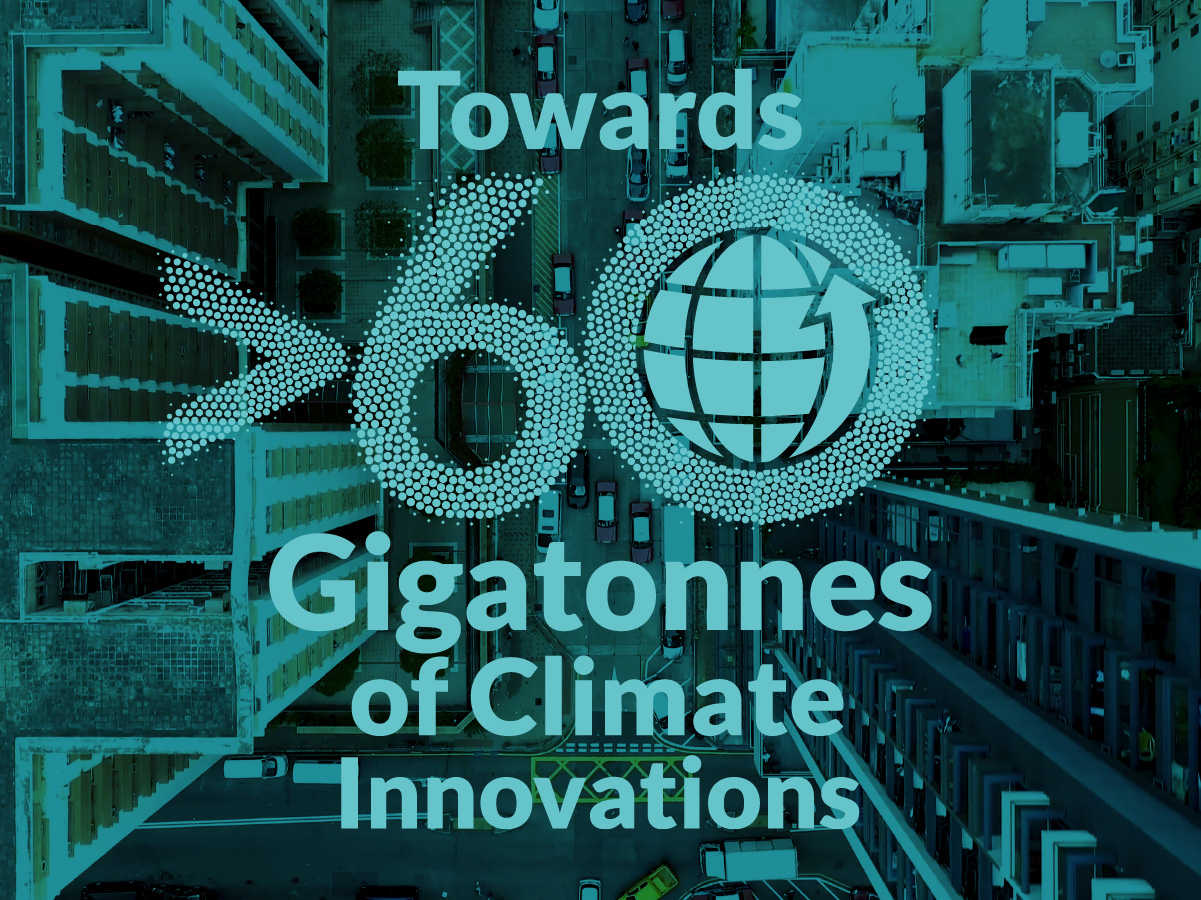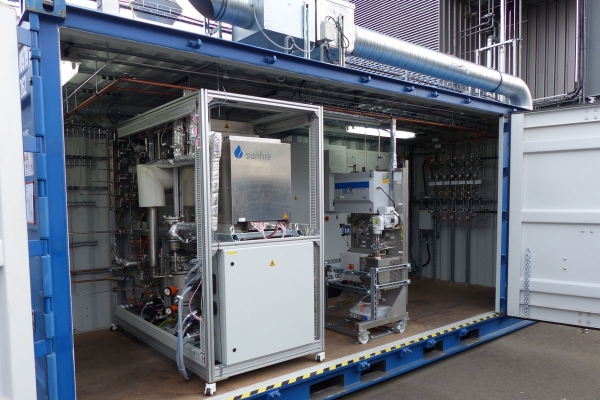Nominated innovations
1000 innovative clean energy solutions and > 150 framework enablers with the potential to deliver more than twelve gigatonnes of avoided emissions by 2030
These assessments are based on a basic avoided emission assessment. The overall concept of avoided emissions is that a solution (product or service) enables the same function to be performed with significantly less GHG emissions. The method of measuring avoided emissions, is to compare a baseline scenario without the enabling solution, with a scenario using the enabling solution; whereby the baseline represents the ‘business as usual’ (BAU) scenario.
These assessments are based on the framework document: The Avoided Emissions Framework (AEF) from September 2020

Plant-based alternatives to meat
Beyond Meat creates plant-based burgers, sausages, crumbles, and other products made directly from simple plant-based ingredients. By shifting from animal to plant-based meat the company aims to solve four growing issues attributed to livestock production: human health, climate change, constraints on natural resources and animal welfare. A life-cycle assessment of the Beyond Burger suggested that compared to an equivalent beef burger, it generates 90% less greenhouse gas emissions, requires 46% less energy, use 99% less water and has 93% less impact on land use.
United States

Beyond Meat
Plant-based alternatives to meat
Beyond Meat creates plant-based burgers, sausages, crumbles, and other products made directly from simple plant-based ingredients. By shifting from animal to plant-based meat the company aims to solve four growing issues attributed to livestock production: human health, climate change, constraints on natural resources and animal welfare. A life-cycle assessment of the Beyond Burger suggested that compared to an equivalent beef burger, it generates 90% less greenhouse gas emissions, requires 46% less energy, use 99% less water and has 93% less impact on land use.
Currently unavailable

Public transportation information for handicapped riders
op wrote: We created an application where handycapped people can check tram information and recive only connections with disability access in the rhein-neckar metropolitan region. All stops with obstructions will be avoided. . Github: https://github. Com/gaschu95/climathon.. Source: EIT Climate KIC's Climathon
Germany

op
Public transportation information for handicapped riders
op wrote: We created an application where handycapped people can check tram information and recive only connections with disability access in the rhein-neckar metropolitan region. All stops with obstructions will be avoided. . Github: https://github. Com/gaschu95/climathon.. Source: EIT Climate KIC's Climathon
Currently unavailable

Turn waste to clean energy
Clean Planet wrote: We process different types of waste into highly flammable gas. We use the gas to generate steam for different applications. Including electricity, drying, hospital sterilizing heating and cleaning. Different waste feed stock leaves different residue. Plastic leaves nothing, rubber leaves black carbon safe material for road construction, aggro-waste like sugarcane and maize stalk leave. Char which is used to make briquettes, this is a clean fuel for cooking and barbecue application. No residue ever goes to the landfill if our innovation is implemented. No waste is transported to a landfill very far from where it was generated. We do not store waste at all. Waste will be processed to energy in our portable unit... Source: EIT Climate KIC's ClimateLaunchPad
Kenya

Clean Planet
Turn waste to clean energy
Clean Planet wrote: We process different types of waste into highly flammable gas. We use the gas to generate steam for different applications. Including electricity, drying, hospital sterilizing heating and cleaning. Different waste feed stock leaves different residue. Plastic leaves nothing, rubber leaves black carbon safe material for road construction, aggro-waste like sugarcane and maize stalk leave. Char which is used to make briquettes, this is a clean fuel for cooking and barbecue application. No residue ever goes to the landfill if our innovation is implemented. No waste is transported to a landfill very far from where it was generated. We do not store waste at all. Waste will be processed to energy in our portable unit... Source: EIT Climate KIC's ClimateLaunchPad
Currently unavailable

Pyrocycle
Pyrocycle wrote: Pyrocycle developed a new patent pending, cost-effective and environmentally friendly thermochemical process for recycling the end-of-life electronic waste. A unique approach that can recycle the electronic waste without toxic emissions or landfill, by recovering the base metals like copper and the precious metals like gold; and also by decontaminating the plastics that contain high levels of toxic flame retardants, whose releases cause environmental and human health concerns, and transform these plastics to value-added products like: oil and carbon... Source: EIT Climate KIC's ClimateLaunchPad
Canada

Pyrocycle
Pyrocycle
Pyrocycle wrote: Pyrocycle developed a new patent pending, cost-effective and environmentally friendly thermochemical process for recycling the end-of-life electronic waste. A unique approach that can recycle the electronic waste without toxic emissions or landfill, by recovering the base metals like copper and the precious metals like gold; and also by decontaminating the plastics that contain high levels of toxic flame retardants, whose releases cause environmental and human health concerns, and transform these plastics to value-added products like: oil and carbon... Source: EIT Climate KIC's ClimateLaunchPad
Currently unavailable

Reversible solid oxide cells
Reversible solid oxide cells are single devices that can both split water to produce hydrogen, as well as convert hydrogen back to electricity. Solid oxide cells typically operate at very high temperatures, which avoids the need for precious metal catalysts. However, the high temperatures mean that the materials a solid oxide cell need to have extraordinary properties. Sunfire has developed this technology to find materials that are up to the task, thus enabling the use of green electricity as a renewable feedstock for industry and mobility. The PowerCore solid oxide cell stack is Sunfire's technology for the production of steam electrolysers and high-temperature fuel cells.
Germany

Sunfire
Reversible solid oxide cells
Reversible solid oxide cells are single devices that can both split water to produce hydrogen, as well as convert hydrogen back to electricity. Solid oxide cells typically operate at very high temperatures, which avoids the need for precious metal catalysts. However, the high temperatures mean that the materials a solid oxide cell need to have extraordinary properties. Sunfire has developed this technology to find materials that are up to the task, thus enabling the use of green electricity as a renewable feedstock for industry and mobility. The PowerCore solid oxide cell stack is Sunfire's technology for the production of steam electrolysers and high-temperature fuel cells.
Currently unavailable

Localot
Localot wrote: Localot provides an infrastructure to connect local retailers with customers in their city. This connection is achieved through a combination of an online shop with a "last-mile" delivery system based on bicycles. On our platform, customers can learn about, compare and buy their needed goods from their local shop. Through our routing system, a bike rider fetches the ordered products picked by the retailer and delivers them within a short time period. In this process, waste is avoided through a pawn system which is based on reusable packaging (e. G. Aluminium boxes). Therefore, our customers can enjoy their locally provided and emission-freely delivered products without having to stress about going shopping for themselves... Source: EIT Climate KIC's Climathon
Germany

Localot
Localot
Localot wrote: Localot provides an infrastructure to connect local retailers with customers in their city. This connection is achieved through a combination of an online shop with a "last-mile" delivery system based on bicycles. On our platform, customers can learn about, compare and buy their needed goods from their local shop. Through our routing system, a bike rider fetches the ordered products picked by the retailer and delivers them within a short time period. In this process, waste is avoided through a pawn system which is based on reusable packaging (e. G. Aluminium boxes). Therefore, our customers can enjoy their locally provided and emission-freely delivered products without having to stress about going shopping for themselves... Source: EIT Climate KIC's Climathon
Currently unavailable

Solar concentrators for high-rise buildings
Un1imited wrote: Global concern about electrical consumption and environmental sustainability inspired the application of solar energy in buildings. As expected, more than 60% of the world’s population will live in urban areas in 2030. Residential buildings are being built to be increasingly taller. At present, rooftops are typically used to install pv systems, however, as buildings are becoming taller, the available roof space per living unit may not be adequate to meet the energy demand of the building. On the other hand, many high-rise residential buildings have a large façade-to-roof area ratio. Building facades could therefore potentially be used for harvesting solar energy... Source: EIT Climate KIC's ClimateLaunchPad
United Kingdom

Un1imited
Solar concentrators for high-rise buildings
Un1imited wrote: Global concern about electrical consumption and environmental sustainability inspired the application of solar energy in buildings. As expected, more than 60% of the world’s population will live in urban areas in 2030. Residential buildings are being built to be increasingly taller. At present, rooftops are typically used to install pv systems, however, as buildings are becoming taller, the available roof space per living unit may not be adequate to meet the energy demand of the building. On the other hand, many high-rise residential buildings have a large façade-to-roof area ratio. Building facades could therefore potentially be used for harvesting solar energy... Source: EIT Climate KIC's ClimateLaunchPad
Currently unavailable

Mango solar
mango solar wrote: 1. 2 billion people in the world have no access to electricity. They satisfy basic energy needs through kerosene, which is expensive and harmful to health - especially for children. We from mango solar develop long-lasting solar home systems so people can enjoy clean and safe energy, 80 times brighter lighting and save up to 590 € in 5 years. In addition, we provide a robust and waterproof smartphone, enabling people access to the online world for the first time in their life. At the same time, this is the interface to our mango cloud, providing services like remote support, education and financing. This is how we’re shifting digitalization to previously unreachable areas!... Source: EIT Climate KIC's ClimateLaunchPad
Germany

mango solar
Mango solar
mango solar wrote: 1. 2 billion people in the world have no access to electricity. They satisfy basic energy needs through kerosene, which is expensive and harmful to health - especially for children. We from mango solar develop long-lasting solar home systems so people can enjoy clean and safe energy, 80 times brighter lighting and save up to 590 € in 5 years. In addition, we provide a robust and waterproof smartphone, enabling people access to the online world for the first time in their life. At the same time, this is the interface to our mango cloud, providing services like remote support, education and financing. This is how we’re shifting digitalization to previously unreachable areas!... Source: EIT Climate KIC's ClimateLaunchPad
Currently unavailable

Net zero refurbishments
Ecoworks GmbH has developed the Net Zero Refurbishments, which is a method to refurbish apartment houses with pre-fabric parts to achieve a lower energy demand in houses, and also to shift most of the energy used to be from a renewable source (solar power). The solution uses photovoltaic cells and a heat pump to reduce the electricity needed from the grid. This means that no heat from the grid is needed, however some electricity would be externally provided to meet the demand.
Germany

Ecoworks GmbH
Net zero refurbishments
Ecoworks GmbH has developed the Net Zero Refurbishments, which is a method to refurbish apartment houses with pre-fabric parts to achieve a lower energy demand in houses, and also to shift most of the energy used to be from a renewable source (solar power). The solution uses photovoltaic cells and a heat pump to reduce the electricity needed from the grid. This means that no heat from the grid is needed, however some electricity would be externally provided to meet the demand.
Currently unavailable

Mvua Nzuri!
Mvua Nzuri wrote: Typically, the soil type is not consistent throughout the field. It varies. Instead of pouring each and every inch of it with the same intensity, it makes more sense to irrigate certain areas only when really necessary. to determine the need, we have developed low-cost, wireless sensorpacks that can be put anywhere into the soil. The sensors measure rain, brightness, humidity, soil moisture, temperature and air pressure. However, their great potential will only occur if several sensors are distributed over the field and linked with each other. Due to triangulation of the signal transit time, it is possible to calculate their relative position in the mesh... Source: EIT Climate KIC's Climathon
Germany

Mvua Nzuri
Mvua Nzuri!
Mvua Nzuri wrote: Typically, the soil type is not consistent throughout the field. It varies. Instead of pouring each and every inch of it with the same intensity, it makes more sense to irrigate certain areas only when really necessary. to determine the need, we have developed low-cost, wireless sensorpacks that can be put anywhere into the soil. The sensors measure rain, brightness, humidity, soil moisture, temperature and air pressure. However, their great potential will only occur if several sensors are distributed over the field and linked with each other. Due to triangulation of the signal transit time, it is possible to calculate their relative position in the mesh... Source: EIT Climate KIC's Climathon
Currently unavailable